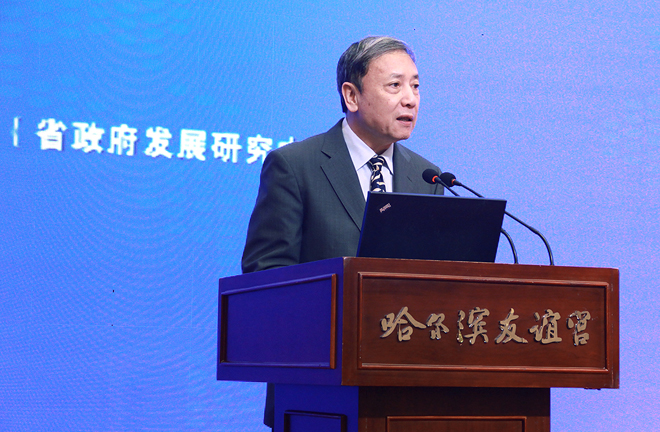China and Russia enhance cooperation and common development

Cai Fang, vice president of the Chinese Academy of Social Sciences, delivers a speech at a think tank forum on China-Russia economic cooperation held in Harbin, Heilongjiang Province, on June 14. Photo: CASS
A think tank forum on China-Russia economic cooperation was held in Harbin, Heilongjiang Province on June 14. Government officials, scholars and corporate representatives discussed issues related to promoting the Belt and Road (B&R) initiative, the building of the China-Mongolia-Russia Economic Corridor, and China-Russia regional cooperation.
In 2018, China-Russia cooperation made historical breakthroughs and trade volume reached $107 billion, making China the top trading partner of Russia for eight consecutive years. Cai Fang, vice president of the Chinese Academy of Social Sciences, said that China and Russia will continue to push ahead with the combining of the B&R initiative and the Eurasian Economic Union, stimulating the internal driving force of the two countries’ cooperation. While promoting cooperation in energy and other traditional fields, China and Russia need to explore new growth in the fields of high technology, agriculture, e-commerce and financing; enhance bilateral cooperation and common development; and benefit both peoples. Heilongjiang Province should leverage its cultural and historical strengths, enhance its participation in the B&R initiative, and deepen its all-around opening up to Russia, Mongolia and Northeast Asia. A new model of regional cooperation with Russia can be formed, with Heilongjiang as a regional transportation hub, a cross-border cooperative corridor, a key area for logistics and connectivity, a financial and business center, and a cultural and technological base.
Sun Dongsheng, vice governor of the People’s Government of Heilongjiang Province, said that, in recent years, to cater to China-Russia regional cooperation, Heilongjiang Province has been advancing the construction of the China-Mongolia-Russia Economic Corridor and building such projects as the Heilongjiang (China-Russia) Free Trade Zone, the pilot zone for opening up along the border and the demonstration zone for cross-border economic cooperation. Heilongjiang also strives to expand cooperation to central Russia and Central Europe, promote all-around and higher-level cooperation, and enhance strategic mutual trust and economic and trade cooperation, so as to form a new and improved pattern for opening up. Under new circumstances, Heilongjiang will leverage its advantages in geographical position, technology and labor market; seize the opportunity brought about by the B&R initiative and Russia’s strategy for the development of the Far East; and innovate in development ideas and policies. In addition, it will formulate new development models, enhance China-Russia economic cooperation in both quality and quantity, and accelerate its comprehensive vitalization.
Ostrovsky, vice president of the Russia-China Friendship Association, and vice director of the Far East Institute under the Russian Academy of Sciences, said that in the process of developing Siberia and the Far East, Russia regards China as its best partner. Russia must integrate the development of Siberia and the Far East with the B&R initiative. Accelerating infrastructure construction in the Far East area, particularly construction in the fields of transportation, energy and financing, will ensure that Siberia and the Far East and even all of Russia can deal with crises and meet the demand for products and services. Accelerating infrastructure will also improve the economic infrastructure in Russia’s Asian regions, create an appealing business environment for foreign investors, and speed up Russia’s economic integration with the Asia-Pacific.
edited by SU XUAN

 PRINT
PRINT CLOSE
CLOSE